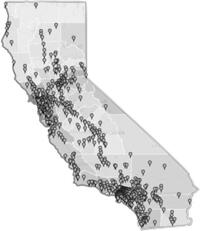New paper highlights how socio-economic characteristics of a specific area influence traffic safety
Former SafeTREC graduate student researcher and current postdoctoral researcher at the McMaster Institute for Transportation and Logistics (MITL) Amir M. Amiri has co-authored a new publication, "Evaluating the impact of socio-economic contributing factors of cities in California on their traffic safety condition" with researchers Koorosh Naderi, Jill F. Cooper, and Navid Nadimi in the Journal of Transport & Health.
Abstract
Introduction
Careful consideration of the factors that result in the traffic collision occurrence is essential from the public health point of view. This allows us to propose prevention measures based on a multidisciplinary focus, including the health, education, labor, transportation areas, and others. Accordingly, the present study pursues a twofold objective: a) investigating how socio-economic characteristics of a specific area can influence the level of traffic safety frequency in that area; b) evaluating and comparing the capabilities of different modeling approaches in pursuit of the former goal.
Methods
A set of 365 cities in the State of California with their socio-economic characteristics (such as age, educational level, median household income, and among others) in hand were considered in predicting the rate of traffic injuries and fatalities based on the regional population. Furthermore, the capability of Principal Component Analysis (PCA) in enhancing the accuracy of the results obtained from the developed Artificial Neural Network (ANN) has been studied using SPSS software.
Results
According to the results, the male population percentage has the most significant impact on the modeling process, followed by the unemployment rate and the education level. College and university enrollment is another significant contributing factor that has been ignored in the previous studies, which shows how students’ behavior would affect the overall traffic safety condition of a given city.
Conclusions
Generally, it can be concluded that the evaluation of the correlation between socio-economic factors and traffic collision occurrence can provide decision-makers with valuable insight into the preventive policies in pursuing the goal of improving the overall level of traffic safety.
Interested in reading more publications from SafeTREC? Visit our publications page.
